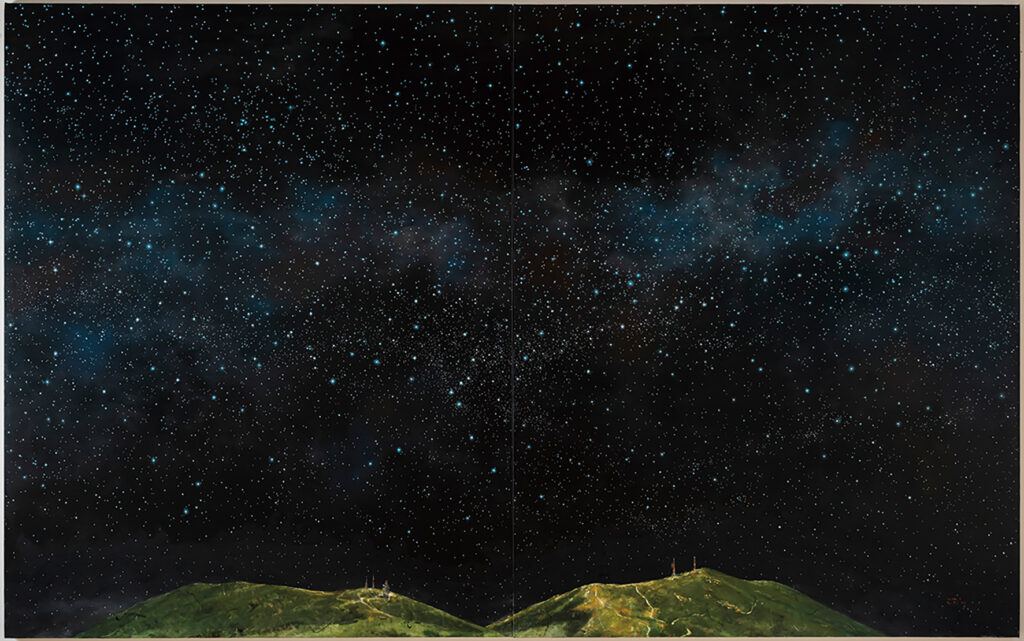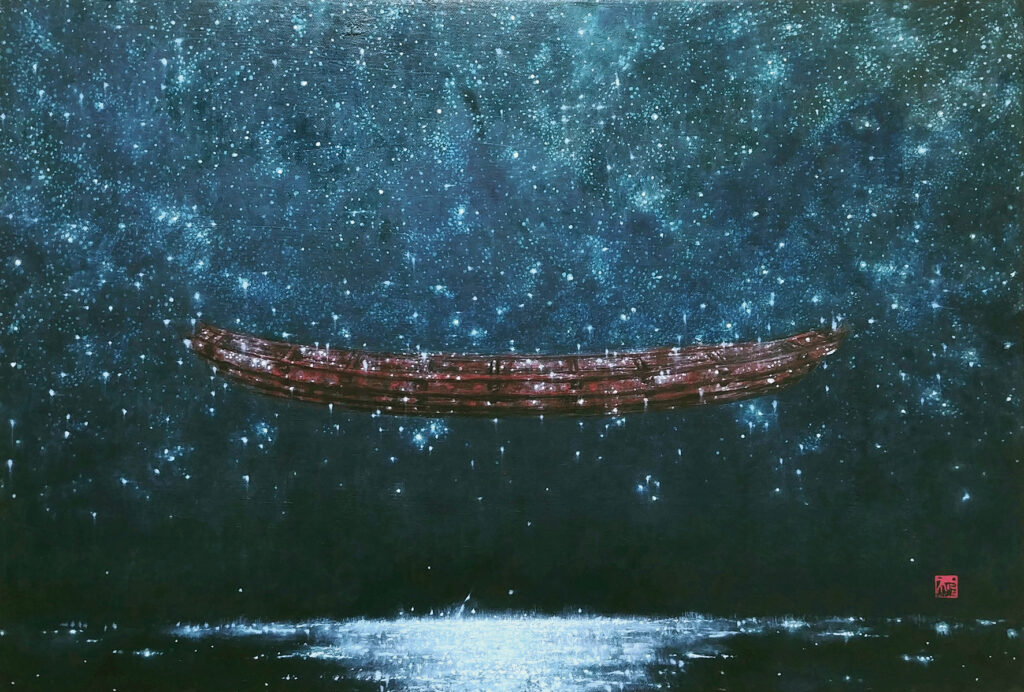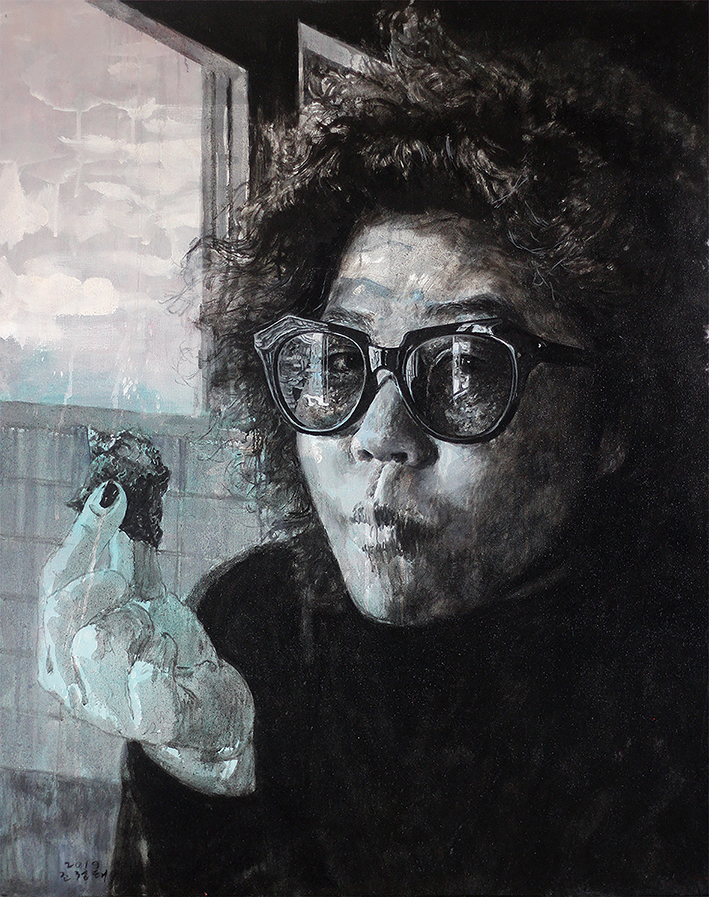Painting Stories of the World We Live In Artist Cho Jeong-tae
By Kang “Jennis” Hyunsuk
In 2020, an exhibition commemorating the 40th anniversary of the May 18 Gwangju Uprising was held at the Gwangju City Museum of Art. The exhibition was named after a piece done by an artist. The artwork, titled “People Who Have Become the Stars,” measuring a whopping 1,172 centimeters in length, depicts numerous stars above a vast sea and majestic mountain range. The artist who painted this piece, Cho Jeong-tae, has been a cultural activist engaged in art movements for over 30 years, from the time of his enrollment in the Department of Fine Arts at Chosun University in the mid-1980s. In this issue of People in the Arts, we meet Cho Jeong-tae, an artist who tells stories through his paintings about the world we live in, the people who have lived here, those who are living, and those who will come in the next generation. For this interview, I visited the artist’s studio on Art Street in downtown Gwangju.

Jennis: Thank you for taking the time for an interview with the Gwangju News. As May approaches, I thought of interviewing an artist who embodies the spirit of May [May 18, 1980]. I thought of you, who has been engaged in minjung art for many years. I’m curious about what May means to you, as someone who has been involved in minjung art for such a long time.
Cho Jeong-tae: Actually, I don’t particularly like the label of “minjung artist.” Just as an actor’s spectrum of acting narrows if they are assigned a specific label, defining an artist as one who only paints a certain type of paintings narrows their artistic spectrum. Nevertheless, I enjoy incorporating the stories of the people who have lived in this land into my paintings. Some say that Gwangju should move on from May. In this era where the desire to find the historical value of the May Uprising is fading, I believe that the stories of May should be passed down like legends for the sake of future generations.
Jennis: I’m curious about how you first encountered painting and how your paintings have evolved over time.
Cho Jeong-tae: Thanks to my father, who was a teacher at a school on Wando Island, at the southern end of Jeonnam Provence, I spent my childhood looking at the sea. It’s like a natural occurrence for the sea to frequently appear as the subject of my paintings. I’ve loved drawing since I was young, so naturally, I entered the Department of Fine Arts at Chosun University. In the 1980s, the campus area was constantly filled with protests exposing the reality of the military dictatorship. When I entered university in 1986, I naturally became involved in social art activities.
Jennis: Your recent paintings seem to have become more subdued. You gently float a boat on a calm sea, contrasting it with your earlier works – intense red seas with raging waves. Was there a catalyst for this change?
Cho Jeong-tae: I suddenly thought, “Instead of looking outside for inspiration, I should look at myself.”

Jennis: You participated in a residency program for young artists sponsored by the Gwangju City Museum of Art, which took you to China. I’m curious about your artistic activities there.
Cho Jeong-tae: The studio I spent a year at in Beijing was an ideal space with a very high ceiling, allowing me to create large artworks. It was a time when I could freely create the large works I wanted to do. While walking around downtown Beijing, I observed the stories of the people living there. One day, when I was reading the newspaper, I saw a photo of many people swimming in the summer sea. There were so many people with tubes that the water was hardly visible. I was inspired to depict the instinctual desires of people in modern society through my paintings.
Jennis: I noticed that you painted the artist, Lim Nam-jin, whom we previously interviewed for the Gwangju News. The portrayal of Lim Nam-jin’s curly hair style, the shadow reflected in her glasses, and the way she seems to be enjoying something delicious in the painting are quite amusing. Do you often do portrait work?
Cho Jeong-tae: Yes, I sometimes paint portraits of people. I receive requests from acquaintances, and I often paint portraits of fellow artists. Since Lim Nam-jin has been involved in minjung art for a long time, I think it was easier to express her characteristics through painting.

Jennis: Your paintings seem as though they would be great to see in an art museum. I’m curious about the direction of your future paintings.
Cho Jeong-tae: I hope people remember me as a painter who wanted to keep painting without putting down the brush and as someone who told various stories to the next generation.
Jennis: Thank you for this lengthy interview. I’ll see you at your next exhibition.
After the Interview…
I end this piece with the artist’s writing:
Living through art means a world with no right answers and a journey to find oneself going around in circles. When I vowed to live by painting, I didn’t expect my life to be filled with such contemplation. I paint everyday like writing a diary. I don’t even know if what I’m doing is art. — Cho Jeong-tae
Photographs courtesy of Cho Jeong-tae.
The Interviewer
Kang Jennis Hyunsuk is an explorer of art galleries and museums on weekends. She has been doing oil painting for almost a decade, and she has learned that there are a lot of fabulous artists in this City of Art. On weekdays, she loves to play with kids at her English school in the Suwan area of Gwangju. Instagram: @jenniskang





